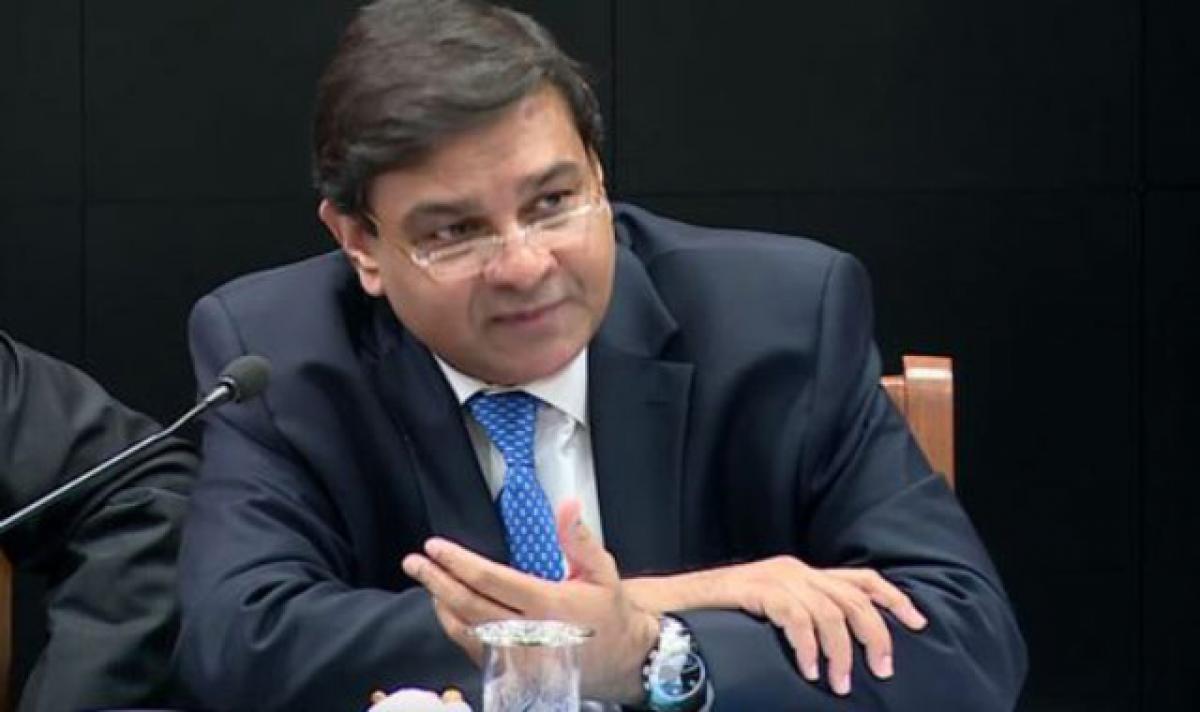Live
- Achievement of Congress in last one year is 'big zero': Karnataka BJP President
- Strict action will be taken if adulterated food items are sold
- 6 sheep and 2 goats were killed by lightning.
- Indian mixed relay team breaks national record, wins gold in Asian Relays
- IPL 2024 Rohit Sharma incident: Broadcaster says committed to protecting players’ privacy
- Congress jailed me 20 times, says its ally Akhil Gogoi in Assam
- Taking wickets is key to stopping batters from big totals in T20s, says Harbhajan Singh
- Cyber DSP Giri Kumar reassured cyber victims
- At 59 per cent, Baramulla Lok Sabha constituency records highest-ever turnout: EC
- Odisha records 60.87 pc voter turnout
Just In

It is not for nothing that a central bank\'s attitude in a monetary policy is called a \'stance\', a term banking shares with cricket, where the position a batsman takes before facing a ball gives a hint of the stroke he will play or not.
It is not for nothing that a central bank's attitude in a monetary policy is called a 'stance', a term banking shares with cricket, where the position a batsman takes before facing a ball gives a hint of the stroke he will play or not.
The Governor of the Reserve Bank of India (RBI) is expected to play like a seasoned Test batsman whose prime job is to keep his wicket before playing for runs, but so steeped are we now in the T20 culture that some expect interest rate cuts like lofted shots in a limited overs game and are disappointed when that does not come to pass.
It is not surprising therefore that the NDA government sees RBI Governor Urjit Patel as a Rahul Dravid-like "Wall" who is less amenable to risky strokes. The Governor was right this week in staying clear of the rate cut the government wanted, and it is now out in the public that the monetary policy committee (MPC) even said no to a meeting with New Delhi's mandarins.
Apart from the minor bonus of shaking off the ghost of his predecessor Raghuram Rajan that invited the tag of a pliable governor, the RBI chief was correct in playing copybook style in downgrading the policy outlook to neutral without actually playing his rate cut stroke despite Chief Economic Advisor Arvind Subramanian's rosy scenario construction for a rate cut.
Here are four reasons why:
1. Farm blues: Even as the Governor was preparing his policy, Madhya Pradesh was burning with a farmers' agitation that pushed his own policy down in the night's prime-time headlines. The Rs 6,000-crore package announced by the Madhya Pradesh government following the Uttar Pradesh government's footsteps and Maharashtra's comparable attitude show that Patel's talk of threat to the Centre's fiscal discipline was on firm ground – and that the Bharatiya Janata Party (BJP)-ruled states were themselves on shaky fiscal basics.
With the Centre already expected to shoulder the burden arising from bad industrial loans in state-controlled banks, there is no need to assume in a hurry that increased government spending on farmers will not stoke demand and thus, inflation. The ball, in fact, is in the court of Dr Arvind Subramanian on this count. Demand for higher minimum support prices to farm goods also hold a cost-push inflation threat.
2. Volatile oil: While farmers protested in MP, oil nearly came to the boil as Saudi Arabia and some other Arab nations cut off diplomatic ties with Qatar – potentially sounding a note of caution to India's oil import budget. Coinciding with the RBI policy, we had Islamic State militants attacking Iran's parliament. While the overall perception is that geopolitical risks are not significant enough to cause an oil shock, the fact is that it cannot be ruled out. Oil prices have stabilised this week mainly on account of a rise in US stockpiles that offset the mood of caution. Traders are still worried about a West Asian output cut that can force up oil prices.
3. Monsoon mood: The monsoon has just arrived. While the government's Met department is gung-ho on the prospects of annual rains, it pays to remember that private forecaster Skymet is sticking to its guns on less rains -- and there is always the additional risk factor in the way the rains are distributed over the sprawling subcontinent. In the good old days, the monetary policy review after the monsoon rains was called the 'busy season' policy as it helped policy makers reduce agriculture-related risks. It makes sense for the RBI to wait out the rainy season before deciding firmly on further rate cuts.
4. GST uncertainties: Apart from all this, there is the Goods and Service Tax (GST) factor looming large. While the GST is expected by the government to bring down inflation, there are contrarian views that higher service tax rates may fuel inflation at least in a short-term, limited way. We may also add to this potential start-up hiccups in the way GST is implemented, adopted and audited in the initial months.
Given all this, why should the RBI Governor be in a hurry to play a lofted stroke and cut interest rates? The irony is that many private market analysts who have reasons to cheer a rate cut expected the Governor to do exactly what he did, suggesting their realism is on stronger ground than the romantic expectations in the North Block. (This article was first published at http://www.firstpost.com. Reprinted with their permission)
By Madhavan Narayanan

© 2024 Hyderabad Media House Limited/The Hans India. All rights reserved. Powered by hocalwire.com







